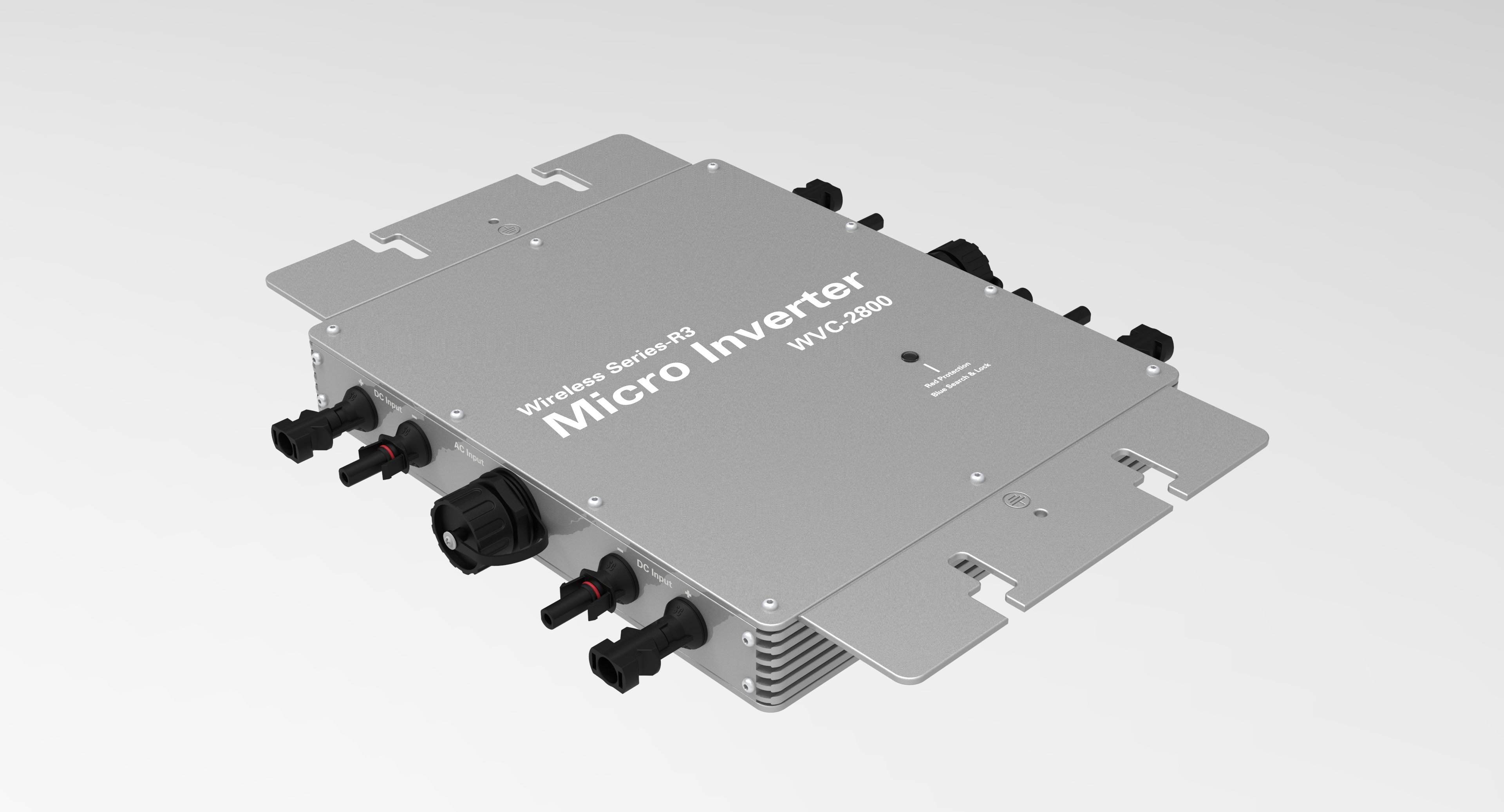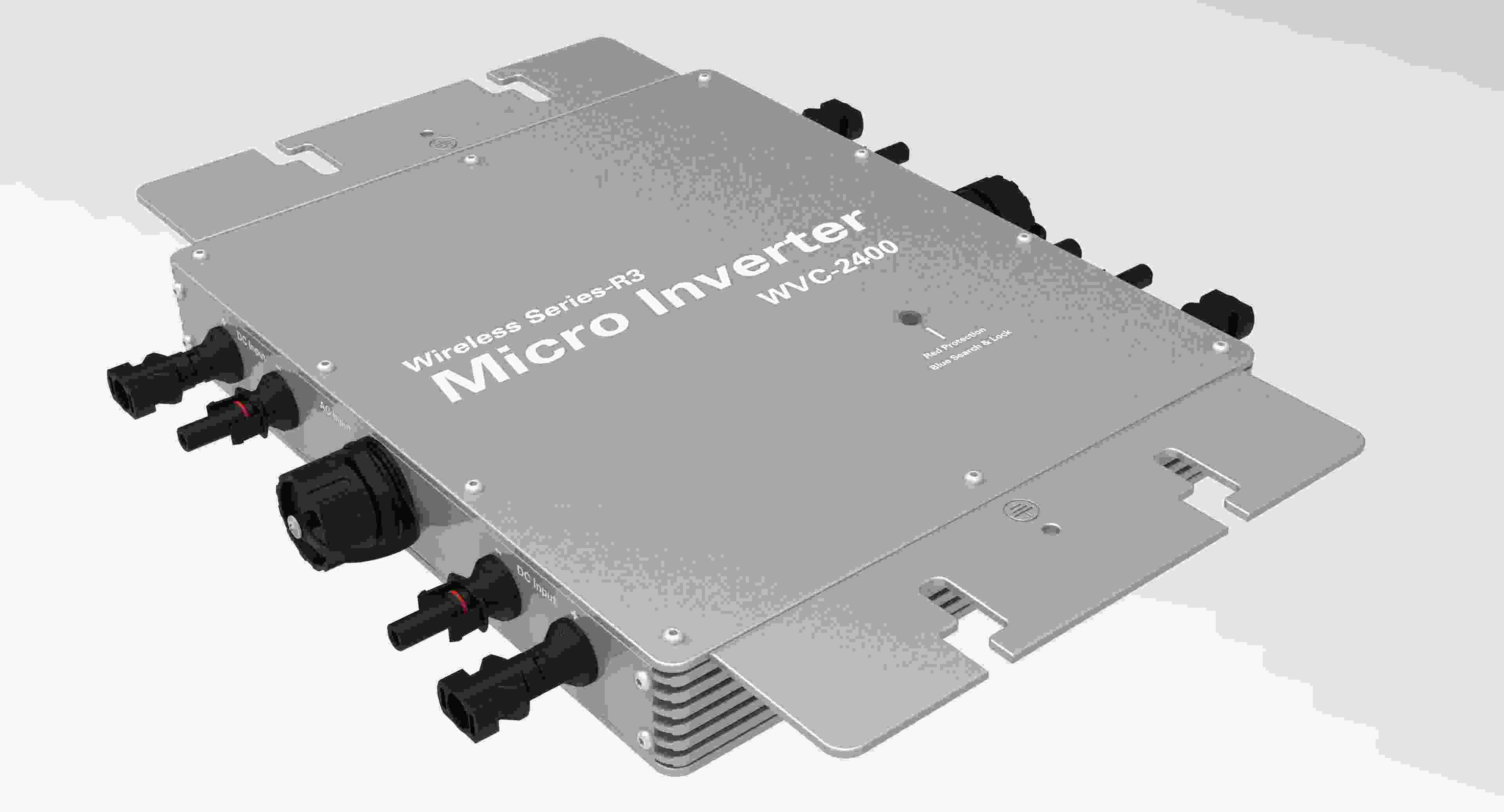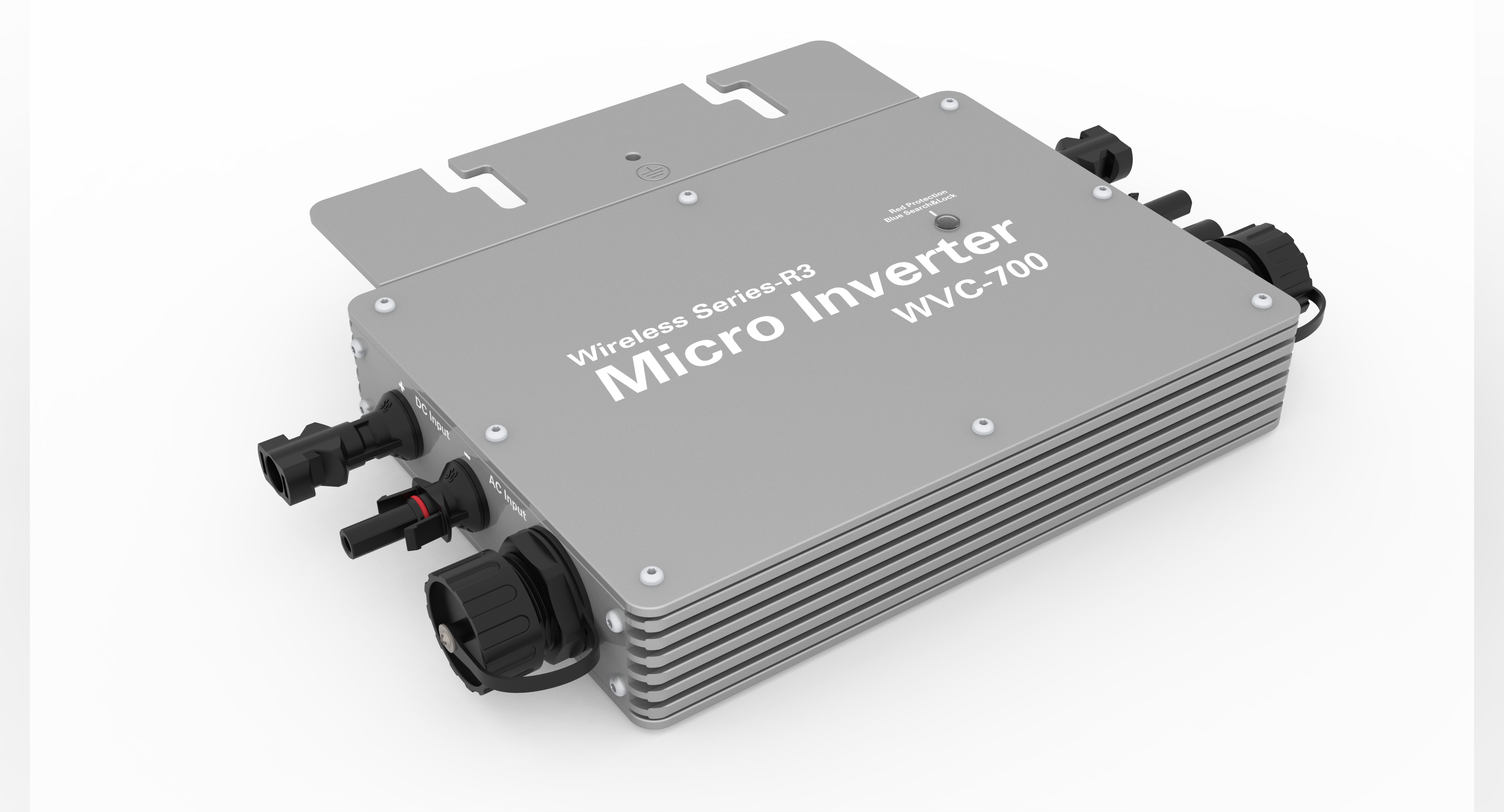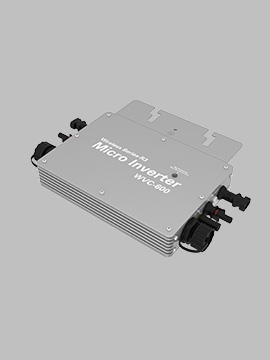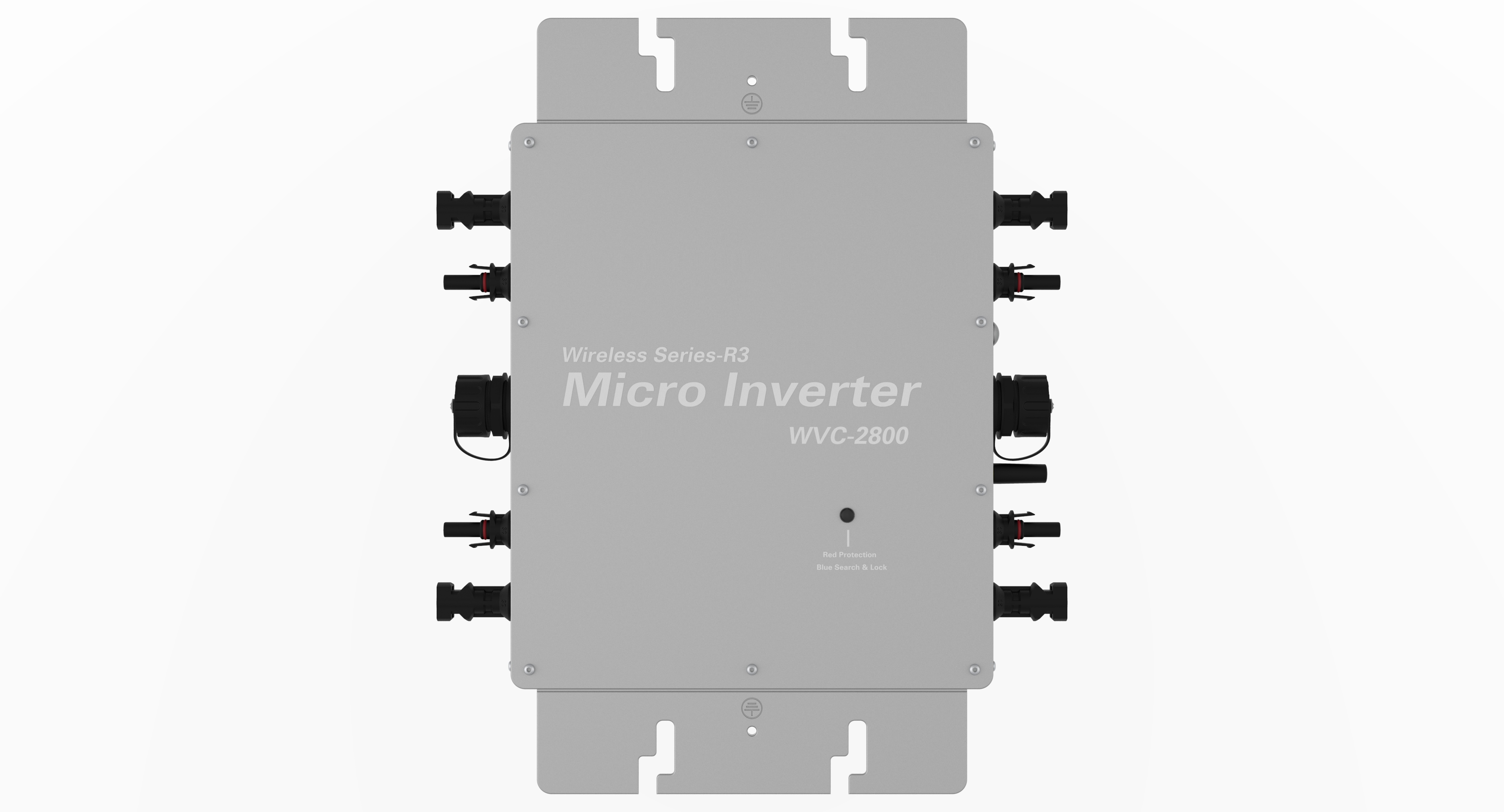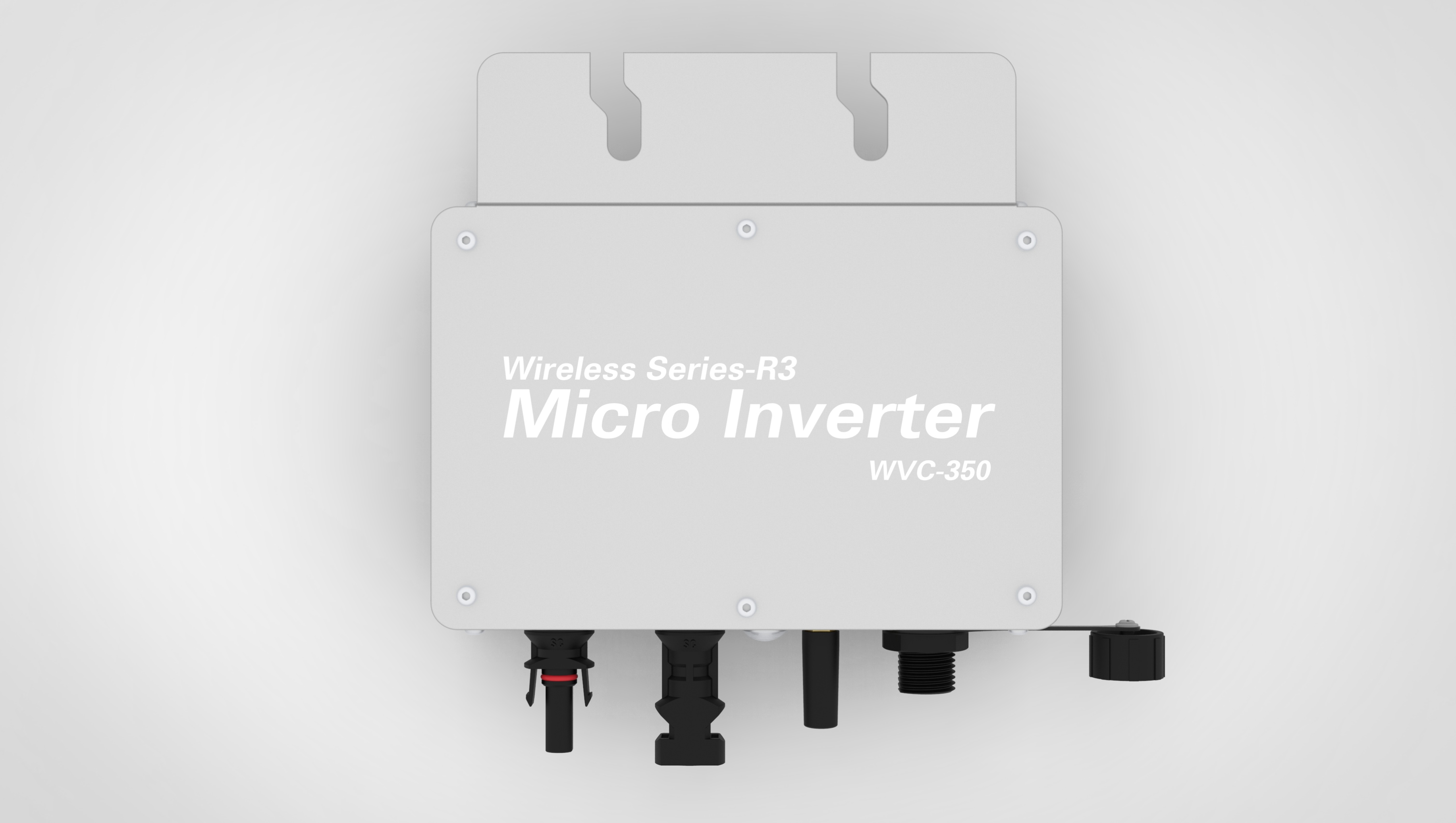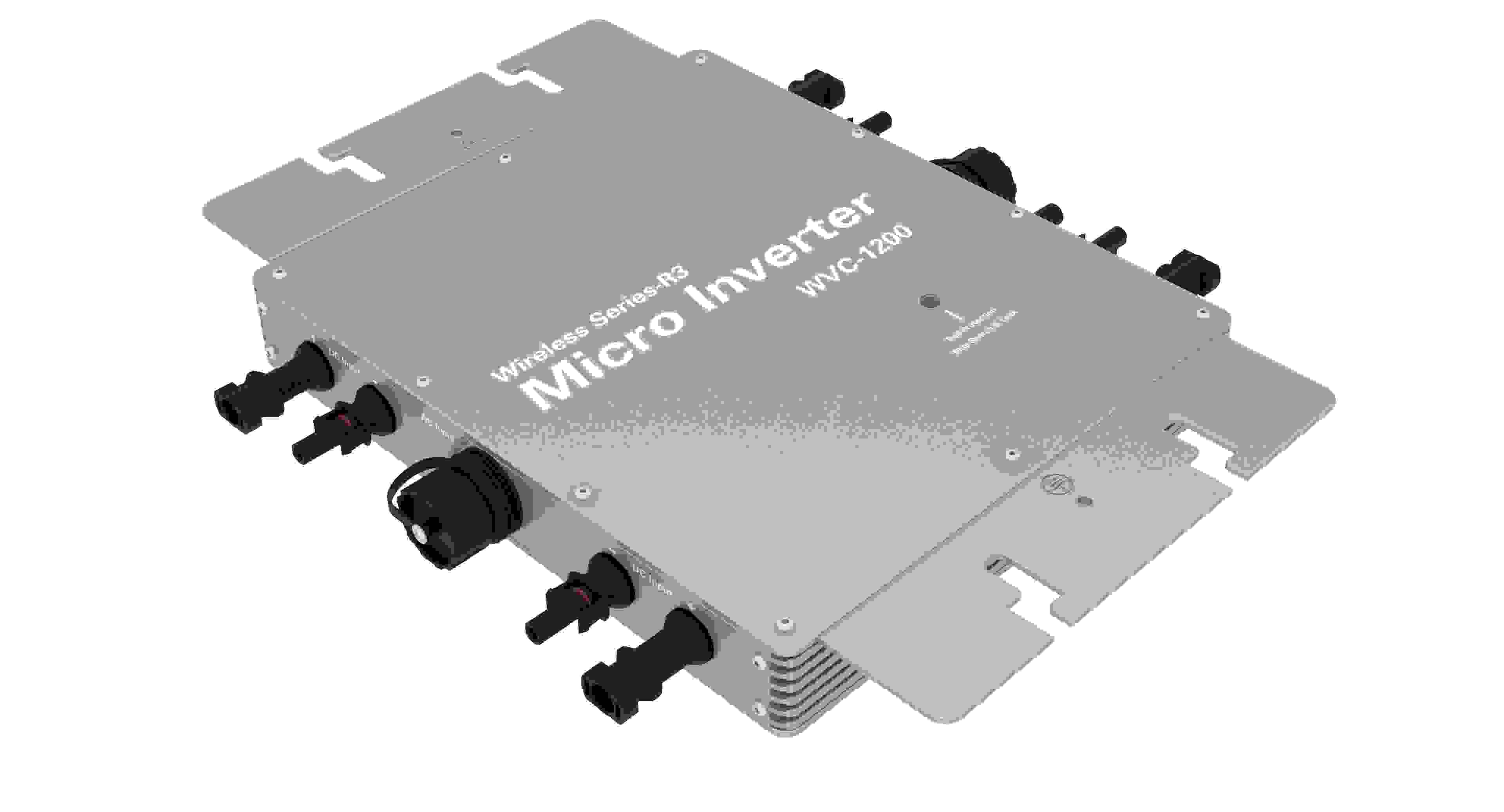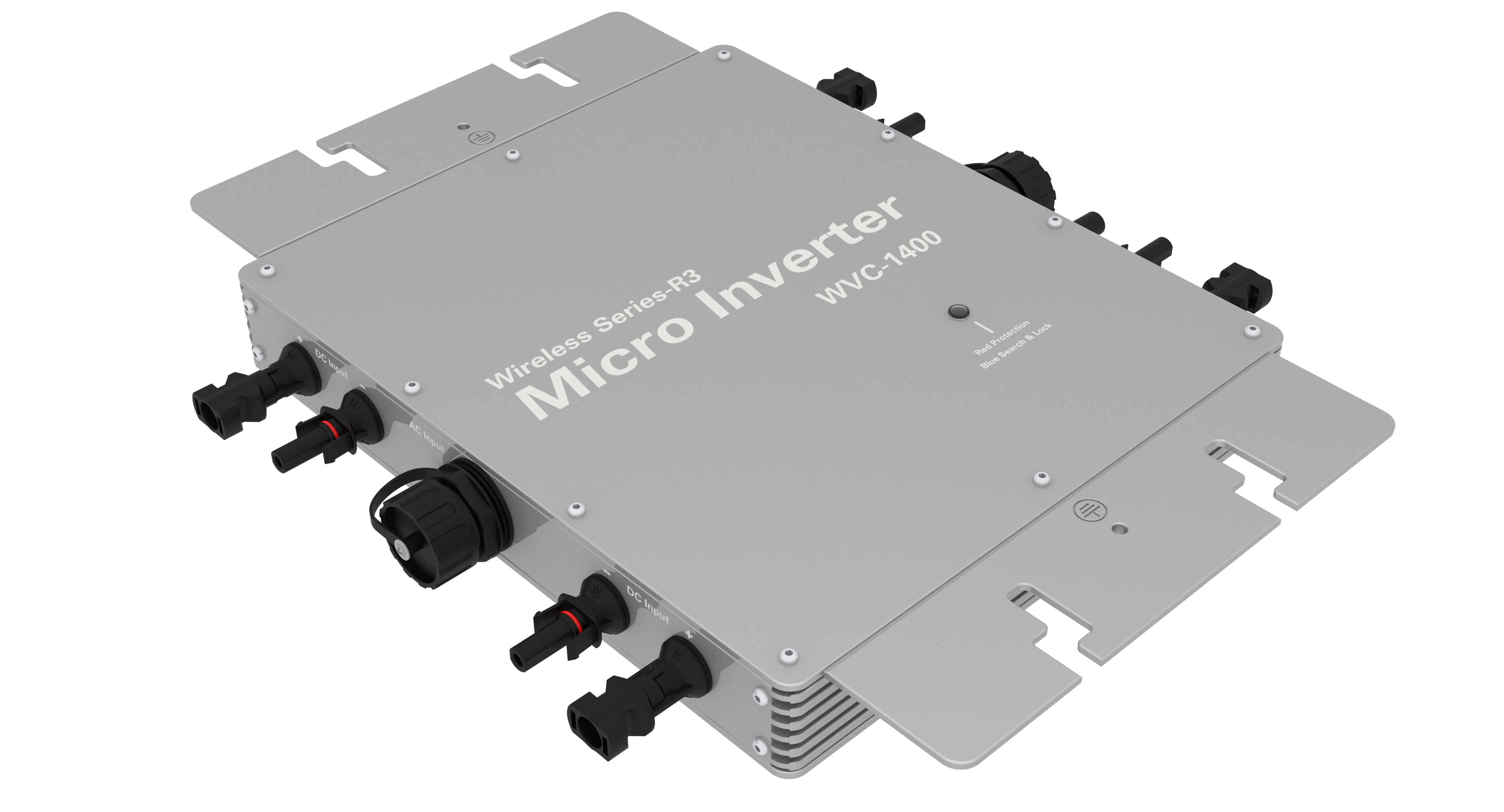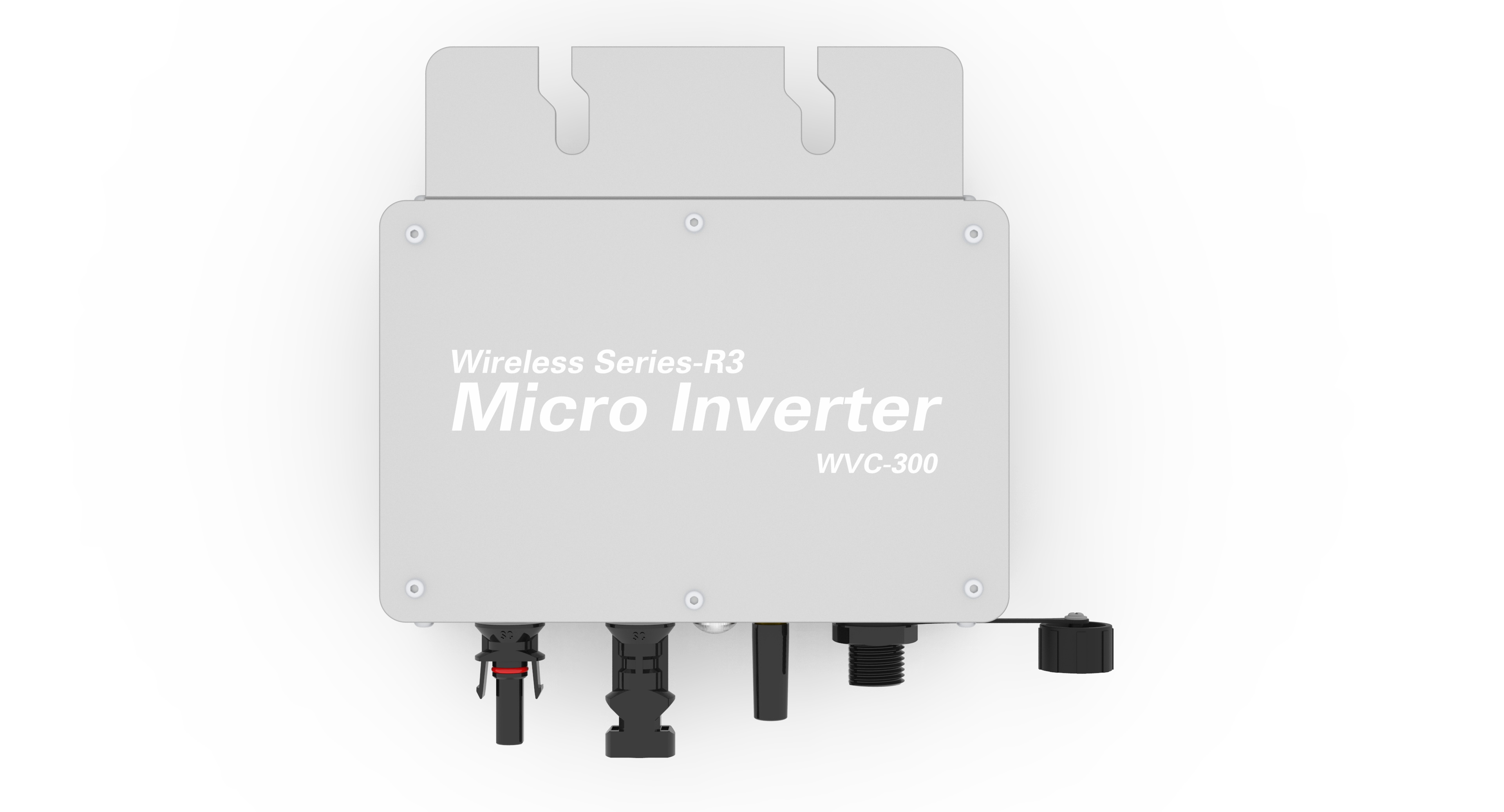Home Energy System Power Inverter WVC-1600
The inverter is equipped with 433MHz communication function as standard, and can communicate with our data collector (optional), and the data collector only needs to be connected to a wireless router to obtain various real-time data in the power station and upload it To the cloud server. Users only need to install our power station management application on their mobile phones to easily access various data in the power station and manage the power station.
Learn More Get a QuoteHome Energy System Power Inverter WVC-2000
WVC2000 Using IP65 waterproof streamline design, Can effectively prevent rainwater on the surface erosion, Built-in high-performance Maximum Power Point Tracking(MPPT)Function,Better able to track changes in the solar luminosity and control different output power, Effectively capture and collect sunlight.
Learn More Get a QuoteHome Energy System Power Inverter WVC-2400
The fifth generation WVC series communication products adopt waterproof flow line design, which can provide better heat dissipation function for the equipment. The built-in maximum power point tracking engine (MPPT) can better capture changes in lighting, and it can work even in rainy weather. It can maximize the capture and collection of sunlight. The inverter is compatible with a variety of conventional solar panels with an open circuit voltage of 22~60V, and the panel can exert its best performance through technical means.
Learn More Get a QuoteHome Energy System Power Inverter WVC-700
On Grid Solar Inverter 700w for Home Energy System Power Inverter 120V/230Vac MPPT Solar DC to Single Phase Power Micro Inverter Monitor by Wi-Fi.
Learn More Get a QuoteHome Energy System Power Inverter WVC-600
On Grid Solar Inverter 600w for Home Energy System Power Inverter 120V/230Vac MPPT Solar DC to Single Phase Power Micro Inverter Monitor by Wi-Fi.
Learn More Get a QuoteHome Energy System Power Inverter WVC-2800
String inverters transform the direct current (DC) from your PV panels into an alternating current (AC) that can be fed into the electrical grid. String inverters are mostly used in residential and commercial solar projects such as rooftop, carport, ground mount and tracker installations. String inverters come in a power range between 2.5 kW and 250 kW.
Learn More Get a QuoteHome Energy System Power Inverter WVC-350
Thank you for using MIC series micro inverter! MIC series micro inverter has high efficiency MPPT engine, intelligent wifi module, multiple security protection, simple installation, reliable performance, equipped with a new generation of smart home (smart life app) wifi monitoring system to use together, to achieve the Internet of things intelligent online monitoring and control!
Learn More Get a QuoteHome Energy System Power Inverter WVC-1200
WVC1200 Using IP65 waterproof streamline design, Can effectively prevent rainwater on the surface erosion, Built-in high-performance Maximum Power Point Tracking(MPPT)Function,Better able to track changes in the solar luminosity and control different output power, Effectively capture and collect sunlight.
Learn More Get a QuoteHome Energy System Power Inverter WVC-1400
WVC1400 Using IP65 waterproof streamline design, Can effectively prevent rainwater on the surface erosion, Built-in high-performance Maximum Power Point Tracking(MPPT)Function,Better able to track changes in the solar luminosity and control different output power, Effectively capture and collect sunlight.
Learn More Get a QuoteHome Energy System Power Inverter WVC-300
PowMr 300W Solar on Grid Tie Inverter 120V/230Vac MPPT Solar DC to single Phase Power Inverter Monitor by WIFI
Learn More Get a QuoteOverview of Solar Inverter
A solar inverter is an electronic apparatus that converts solar energy into alternating current. It consists of major parts such as solar panels, inverters and controllers. Solar panels glean solar energy and transform it into DC power, and an inverter converts the DC power into AC power for use in homes or commercial premises.
Solar inverters offer many advantages. First, it is a renewable energy source that does not run out. Secondly, a solar inverter can be used anywhere there is sunlight, providing power to those who live far from the grid. Additionally, using solar inverters helps reduce dependence on fossil fuels, thereby reducing environmental pollution.
The Characteristics of Solar Inverters
The working principle of solar inverters involves multiple aspects, including energy conversion, maximum power point tracking, protection and safety, grid connection function, intelligent control, and remote monitoring. These functions together ensure the reliability and efficiency of solar inverters, making essential contributions to the application and development of renewable energy.
1. Energy conversion: Inverters are the core of solar energy generation systems, and their primary feature is to convert the straight current created by solar panels into rotating existing; this is achieved by making use of power electronic devices technology, primarily the jobs of rectifiers and inverters.
2. Maximum Power Point Tracking (MPPT): In order to maximize the power generation efficiency of solar panels, inverters are usually equipped with a Maximum Power Point Tracking (MPPT) function. By monitoring and adjusting the working point in real-time, MPPT ensures that the solar panel always operates in its optimal working state, thereby extracting maximum power.
3. Protection and safety: The inverter has numerous security features, such as overload defense, short circuit protection, overvoltage defense, and undervoltage security. These protection mechanisms ensure the safe operation of the inverter and the entire system, preventing equipment damage and potential fire risks.
4. Grid connection function: Modern inverters usually have a grid connection feature, enabling the created electrical power to be transmitted to the grid; this requires inverters to have specific synchronization and phase-tracking capabilities to ensure smooth assimilation with the power grid while likewise giving renewable resource supplements for homes or services.
5. Intelligent control and remote monitoring: With the development of technology, many inverters are now equipped with intelligent control and remote monitoring functions. Through the communication interface, users can view the system status in real time, remotely control the start and stop of the inverter, and even perform remote troubleshooting; this provides convenience for efficient management and maintenance.
Application of Solar Inverter
1. Household use: Convert the DC power collected by solar panels into AC power to provide power for households and reduce dependence on traditional energy sources.

(Household use)
2. Power supply in remote areas: In areas far away from the power grid, solar inverters work with panels to provide a reliable power supply to the local area.

(Power supply in remote areas)
3. Field operations: Solve the power supply problem of field operations and provide reliable power support.

(Field operations)
4. Agricultural applications: In the agricultural field, solar inverters can be used with other equipment, such as irrigation, lighting and processing, to provide the required power.

(Agricultural applications)
5. Distributed energy system: As part of the distributed energy system, it cooperates with other energy supply methods to improve the efficiency and reliability of the energy system.

(Distributed energy system)
6. Public facilities: In public facilities, such as public lighting, traffic signals, air conditioning and other equipment, solar inverters can provide the required power support.

(Public facilities)
Installation location and Environmental Requirements
1. Outdoor installation: The inverter should be installed outdoors, away from fire sources and flammable and explosive items.
2. Waterproof and moisture-proof: The inverter should prevent water from entering the inside of the device and should not be installed in a humid environment.
3. Good ventilation: The inverter needs to maintain heat dissipation and avoid overheating, so it needs to be installed in a well-ventilated place.
4. Temperature environment control: The temperature environment of the solar inverter should be controlled between 1° and 40°.
5. Avoid contact with fire sources and flammable substances: The inverter should not be placed among flammable objects, nor should it be placed in a place easily exposed to dust.
Company Profile
PDDN Photoelectron Technology Co., Ltd.(sales@pddn.com) is one of the leading enterprises in the Home Accessory and Solar Power System, which is fully involved in developing the power industry, intelligent operation and maintenance management of power plants, solar panels, and related solar products manufacturing. We will be committed to providing users with high-quality, efficient products and considerate service.
It accepts payment via Credit Card, T/T, West Union, and Paypal. PDDN will ship the goods to customers overseas through FedEx, DHL, by sea, or by air. If you want a high-quality Solar Product, please send us inquiries; we will be here to help you.
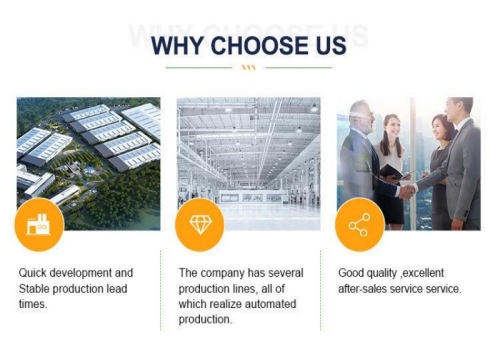
Payment Methods of Solar Inverters
L/C, T/T, Western Union, Paypal, Credit Card etc.
Shipment of Solar Inverters
By sea, by air, by express, as customers request.
Storage Conditions of Solar Inverters
1) Store in a dry environment at room temperature.
2) Avoid damp and high temperature.
3) Use immediately after opening the inner packing bag.
FAQ
Q1:
What is a solar inverter?
Re: A solar inverter is an electronic device that converts solar energy into alternating current. It consists of major parts such as solar panels, inverters and controllers.
Q2:
What type of inverter is best for solar energy?
Re: For solar systems, grid-tied or off-grid inverters are typically used. Grid-tied inverters can connect to the grid and deliver their power to the national grid, while off-grid inverters operate independently and are not connected to the grid. When choosing an inverter, you need to consider your needs and the size of your system.
Q3:
What is the difference between solar panels and inverters?
Re: Solar panels collect solar energy and convert it into DC power, while inverters convert it into AC power for use in homes or commercial premises. Solar panels are typically used to collect solar energy, while inverters convert solar power into usable alternating current.
Q4:
What is a solar inverter product?
Re: A solar inverter is an electronic device that converts direct current into alternating current. It usually consists of components such as semiconductor switches, inductors and capacitors. Solar inverters are highly efficient and can convert solar power into alternating current to power a home or business. In addition, the solar inverter also has a protection function to prevent damage to the equipment due to problems such as excessive current or voltage.
Q5:
What is the price of solar inverters?
Re: The price of solar inverters varies due to various factors, such as model, specifications, brand, configuration, and usage. Different models of inverters have other performances and functions, so their prices also vary. Meanwhile, brand and configuration are also important factors affecting prices. Some high-end brands of inverters may have higher prices, but their performance and quality are more guaranteed. Before purchasing, it is recommended to compare and choose solar inverters based on actual needs and budget to ensure that suitable and cost-effective solar inverters are selected.


